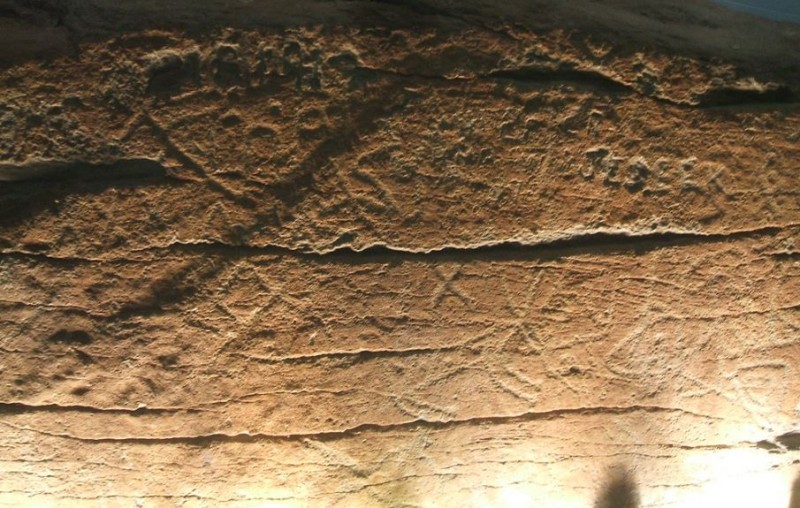
The United States is home to a plethora of historical mysteries, and one of the most enigmatic is Dighton Rock. Situated along the Taunton River in Massachusetts, this massive boulder has baffled archaeologists, historians, and enthusiasts for centuries. Covered in inscriptions, the origins and meanings of the markings remain shrouded in mystery, giving rise to numerous theories and speculations.
The Discovery of Dighton Rock
Dighton Rock's history begins in 1680 when it was first documented by Reverend John Danforth. He noticed peculiar markings covering the surface of the rock and speculated about their potential origins. The rock quickly captured the attention of curious minds, and it became a point of interest for scholars and researchers.
The Enigmatic Inscriptions
The inscriptions covering Dighton Rock have been a subject of intense study and debate. These markings consist of various symbols, characters, and designs etched into the surface. The origin and purpose of these inscriptions have given birth to numerous intriguing theories.
Interpretations and Theories
Native American Connections
The Native American connection to Dighton Rock is a prevalent theme in many theories surrounding its origin. Tribes in the region, such as the Wampanoag, Narragansett, and Massachusett, have cultural ties to the rock. It is believed that they may hold vital knowledge about its history and significance.
Viking Theories
The Viking theory has captured the imagination of many enthusiasts, inspired by Norse sagas and archaeological findings suggesting possible Norse exploration in the New World. Some experts speculate that the markings on Dighton Rock could be Norse runes or symbols left behind by these intrepid adventurers.
Portuguese Explorers Hypothesis
Portuguese explorers were renowned for their maritime prowess during the Age of Discovery. The idea that they could have reached North America and left their mark on Dighton Rock is an exciting possibility. Researchers continue to explore historical accounts and evidence to support this intriguing theory.
Controversies and Debates
The study of Dighton Rock has not been without controversies and debates. As researchers delve into its history and meaning, differing opinions emerge, shaping the narrative surrounding this enigmatic artifact.
Academic Perspectives
Academic circles have debated the authenticity of some theories, often leading to rigorous discussions and research challenges. Divergent interpretations of the inscriptions have sparked intense academic debates, with scholars presenting varying evidence to support their claims.
Cultural Significance
Dighton Rock holds immense cultural significance for the Native American communities in the region. Its preservation and study raise important questions about cultural heritage and the complexities of historical narratives.
Preserving Dighton Rock
Due to its exposure to the elements and human contact over the years, Dighton Rock's condition has deteriorated. Efforts to preserve and protect the rock have been ongoing, with measures in place to safeguard this historical treasure for future generations.
Modern Research Techniques
Advancements in technology and research methodologies have opened new avenues for investigating Dighton Rock. Non-invasive techniques, such as laser scanning and photogrammetry, allow researchers to study the inscriptions in greater detail without causing damage to the rock's surface.
Dighton Rock continues to captivate the world with its inscrutable engravings. As ongoing research sheds light on its history, the rock remains an enduring symbol of mystery and fascination. Exploring its past offers us a glimpse into the rich tapestry of human history and the interconnectedness of civilizations across time.
PM Modi, President honor Kargil bravehearts on Vijay Diwas
India's Defense Minister Declares Bold Stand: Ready to Cross LoC to Safeguard Honor and Sovereignty